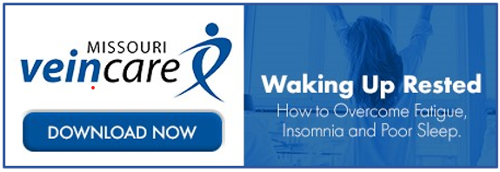How Long to See Results After Vein Treatment

One of the most common questions patients have when considering vein treatment is, "How long does it take to see results?" The truth is, that the timeline for experiencing relief varies depending on the specific symptom being treated. Let's explore the different symptoms and their response patterns to vein treatments.
Immediate Relief for Leg Cramps
For patients suffering from leg cramps, there's good news. The majority of my patients report that leg cramps often go away on the night of the first treatment. In many cases, patients are skeptical when they hear this, but they are very surprised when it turns out to be true. The definition of a leg cramp is an uncontrolled contraction of the leg muscle and is always extremely painful. Typically, leg cramps are significantly alleviated after the first or second treatment.
Fatigue and Aching Legs: Relief Within the First Week
Fatigued and achy legs, common symptoms of vein problems generally start to improve within the first week after treatment. When a vein is treated, a small amount of localized inflammation occurs while it is healing. This post-treatment inflammation can lead to mild discomfort and fatigue. This is because the body's normal response to inflammation includes these sensations. So, as the inflammation from the vein condition diminishes, there may be a slight overlap with the temporary inflammation caused by the treatment.
Most patients report feeling better within a couple of days post-treatment. In my personal experience with my own vein condition and my experience with treatment, I went from extreme discomfort to noticeable relief after just one day. I was amazed! The quick turnaround is indeed exciting for those who, like I was, have been suffering from these symptoms for a long time.
Increased Energy: Improvement in Three to Four Weeks
The improvement in overall stamina is a common outcome of vein treatment. Based on my experience, I estimate that about 90% of patients experience a significant boost in their energy levels and have less fatigue. This transformation typically takes three to four weeks to become noticeable. Family members often observe the change as patients become more active and engage in activities they haven't done in a while.
Skin Discoloration: Improvement Timeline Varies
Skin discoloration, once it develops, tends to persist. While it will usually lighten up to some extent, it typically doesn't completely disappear. On the other hand, visible veins, such as spider veins and varicose veins, will gradually fade away after treatment. The timeline for this process varies, ranging from days to weeks to months. Several factors, including the size and location of the veins and the presence of other skin discoloration, influence how long it takes for these veins to fade.
Improved Sleep Quality: Within the First Week
Interestingly, vein treatment leads to improved sleep quality in most patients. Many patients notice better sleep within the first week after treatment. This unexpected benefit can significantly enhance one's overall quality of life.
Weight Loss: Post-Treatment
I recommend that patients start walking as a way to promote healing shortly after their vein treatment. Engaging in light exercise or calorie-burning activities can follow within the same week. For individuals who aim to lose weight but have been hindered by their vein condition's inactivity, I advise waiting until after starting vein treatments. Once the treatments are underway, inflammation in the body clears, enabling patients to embark on exercise and weight loss programs and experience success more easily.
In conclusion, the timeline for experiencing relief after vein treatment varies from person to person and depends on the specific symptoms being treated. However, most patients report quick results and are amazed at how much better they feel.




